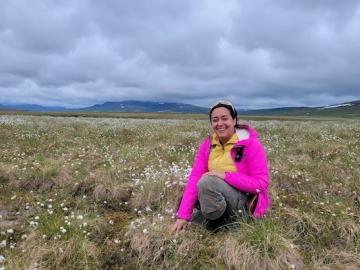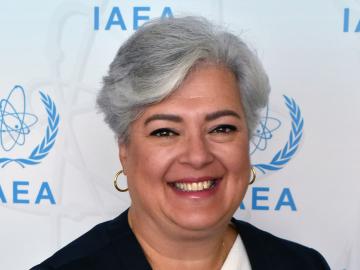Filter News
Area of Research
- Advanced Manufacturing (5)
- Biology and Environment (22)
- Building Technologies (3)
- Clean Energy (53)
- Climate and Environmental Systems (1)
- Computational Biology (1)
- Computational Engineering (1)
- Computer Science (6)
- Fusion and Fission (3)
- Fusion Energy (4)
- Isotopes (2)
- Materials (33)
- Materials for Computing (1)
- National Security (10)
- Neutron Science (12)
- Nuclear Science and Technology (9)
- Quantum information Science (2)
- Renewable Energy (1)
- Supercomputing (11)
- Transportation Systems (1)
News Type
Date
News Topics
- 3-D Printing/Advanced Manufacturing (15)
- Advanced Reactors (7)
- Artificial Intelligence (8)
- Big Data (8)
- Bioenergy (11)
- Biology (11)
- Biomedical (4)
- Buildings (10)
- Chemical Sciences (4)
- Clean Water (7)
- Climate Change (9)
- Composites (4)
- Computer Science (21)
- Coronavirus (4)
- Critical Materials (3)
- Cybersecurity (3)
- Decarbonization (8)
- Energy Storage (11)
- Environment (22)
- Exascale Computing (1)
- Fusion (3)
- Grid (9)
- High-Performance Computing (5)
- Hydropower (5)
- Irradiation (1)
- Isotopes (1)
- Machine Learning (6)
- Materials (14)
- Materials Science (16)
- Mercury (2)
- Microscopy (10)
- Molten Salt (1)
- Nanotechnology (5)
- National Security (8)
- Net Zero (2)
- Neutron Science (10)
- Nuclear Energy (14)
- Partnerships (1)
- Physics (5)
- Polymers (4)
- Quantum Science (5)
- Simulation (3)
- Space Exploration (6)
- Summit (3)
- Sustainable Energy (13)
- Transportation (13)
Media Contacts

With wildfires increasing in scope and intensity around the world, Fernanda Santos’ research into how such calamities affect soil carbon storage has taken on new urgency.

Global carbon emissions from inland waters such as lakes, rivers, streams and ponds are being undercounted by about 13% and will likely continue to rise given climate events and land use changes, ORNL scientists found.

ORNL researchers demonstrated a process for producing a moisture-stable, lightweight thermal insulation material using hollow silica particles, or HSPs.

Researchers at ORNL explored radium’s chemistry to advance cancer treatments using ionizing radiation.

A multi-lab research team led by ORNL's Paul Kent is developing a computer application called QMCPACK to enable precise and reliable predictions of the fundamental properties of materials critical in energy research.

Researchers from ORNL, the University of Tennessee at Chattanooga and Tuskegee University used mathematics to predict which areas of the SARS-CoV-2 spike protein are most likely to mutate.

When Bill Partridge started working with industry partner Cummins in 1997, he was a postdoctoral researcher specializing in applied optical diagnostics and new to Oak Ridge National Laboratory.

Countries around the world have unique languages, cultures, food, entertainment and governments. Yet, more than 170 countries are finding common ground in an unlikely field: nuclear material and science.

Oak Ridge National Laboratory physicist Elizabeth “Libby” Johnson (1921-1996), one of the world’s first nuclear reactor operators, standardized the field of criticality safety with peers from ORNL and Los Alamos National Laboratory.

When Matt McCarthy saw an opportunity for a young career scientist to influence public policy, he eagerly raised his hand.




